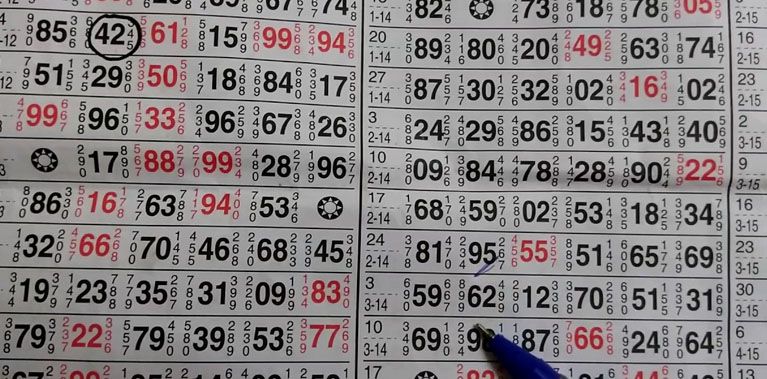Introduction:- Soccer, known as football in most parts of the world, is more than just a sport; it’s a global phenomenon that unites people of all backgrounds and cultures. At the heart of this beautiful game lies a set of rules that govern every aspect of play. Understanding these rules is essential not only for players and coaches but also for fans and newcomers to the sport. In this comprehensive guide, we will delve into the intricate details of soccer rules, from the basics to the finer points, to help you appreciate the game at a deeper level.
The Pitch
Let’s start with the basics: the soccer field, also known as the pitch. A regulation soccer field is typically rectangular, with a length ranging from 100 to 130 yards and a width of 50 to 100 yards. The pitch is divided into two equal halves, with a center circle at the midpoint.
Goal Areas: At each end of the field, you’ll find a goal area, commonly known as the penalty box. This rectangular area extends 18 yards out from the goal and 44 yards wide. The goal itself consists of two upright posts, 8 feet apart, with a crossbar that’s 8 feet above the ground.
Center Circle: In the center of the pitch, there is a circle with a radius of 9.15 meters (approximately 10 yards). This is where the game begins, with one team kicking off from the center spot.
Teams and Players
Each soccer team consists of 11 players on the field at any given time. One player on each team is the goalkeeper, who is the only player allowed to use their hands and arms to play the ball within the penalty area. The remaining ten players are outfield players, who use their feet, head, or other parts of their body to play the ball.
Substitutions: Soccer allows for substitutions during the game, usually during stoppages in play, and each team is typically allowed three substitutions. Substituted players must exit the field near the halfway line.
Offside Rule
The offside rule is one of the most debated and misunderstood rules in soccer. It is essential to prevent goal-hanging or cherry-picking by offensive players. A player is considered offside when they are nearer to the opponent’s goal line than both the ball and the second-to-last defender when the ball is played to them. However, it’s important to note that a player is not offside if they are level with the last two defenders when the ball is played.
Fouls and Free Kicks
Soccer has a set of rules to maintain fair play and protect the safety of players. When a player commits a foul, the opposing team is awarded a free kick. The severity of the foul and the location on the field determine whether it’s a direct or indirect free kick.
Direct Free Kick: A direct free kick allows the player to shoot directly at the goal without the ball touching another player. Common fouls that result in direct free kicks include pushing, tripping, and handball.
Indirect Free Kick: An indirect free kick requires the ball to touch another player before a goal can be scored. Indirect free kicks are awarded for less severe fouls, such as obstruction or dangerous play.
Yellow and Red Cards
To maintain discipline on the field, referees use yellow and red cards to caution or expel players who commit serious offenses.
Yellow Card: A yellow card is shown to a player as a warning for reckless or persistent fouls. If a player accumulates two yellow cards in a single game, they are ejected from the match.
Red Card: A red card is shown for serious offenses, such as violent conduct or a particularly dangerous foul. A player who receives a red card is sent off the field and their team must play with one less player for the remainder of the game.
Penalty Kicks
When a foul occurs within the penalty area, the opposing team is awarded a penalty kick. The penalty spot is 12 yards from the goal line. The only player allowed to defend the goal is the goalkeeper, and the player taking the penalty kick aims to score a goal from this spot.
Throw-ins, Corner Kicks, and Goal Kicks
Soccer features several types of restarts for the game, including throw-ins, corner kicks, and goal kicks.
Throw-in: When the ball goes out of bounds on the sidelines, the opposing team is awarded a throw-in. To perform a throw-in, a player must stand with both feet on or behind the touchline and use a two-handed throw to return the ball to play.
Corner Kick: When the defending team is the last to touch the ball before it goes out of bounds over their goal line, the opposing team is awarded a corner kick. A player from the attacking team places the ball in the corner arc and takes the kick.
Goal Kick: When the attacking team is the last to touch the ball before it goes out of bounds over the goal line, the defending team is awarded a goal kick. The goalkeeper takes the goal kick from within the six-yard box.
Explore the world of sports: from football to tennis, Soccer and Basketball get the latest news, updates, and insights on your favorite games.
The Throw-in Line
A throw-in line is an imaginary line that runs parallel to the touchlines and is drawn at the position where the ball went out of play. The player taking the throw-in must have part of both feet on or behind this line when delivering the ball.
Duration of the Game
A regulation soccer match is divided into two halves, each lasting 45 minutes. After the first half, there is a halftime break, usually lasting 15 minutes. In some competitions, additional time is added to each half to compensate for stoppages in play, such as injuries or substitutions. This additional time is referred to as “injury time” or “stoppage time” and is determined by the referee.
Tie-Breaking Rules
In the event of a tie, such as in tournament matches or league play, soccer has several ways to determine a winner:
Golden Goal: In extra time, the first team to score wins the game. This rule is less common in modern soccer.
Penalty Shootout: If a winner is not determined after extra time, a penalty shootout is used to determine the winner. Each team takes turns shooting penalties from the penalty spot until one team has an insurmountable lead.
Sportsmanship and Fair Play
Soccer places a strong emphasis on sportsmanship and fair play. Players are expected to respect the rules, the referee, and their opponents. Unsportsmanlike conduct, such as diving (simulating a foul), time-wasting, or excessive arguing with the referee, can result in cautions or ejections from the game.
Injury and Substitutions
When a player is injured on the field, the referee may stop the game to allow medical attention. If the injured player cannot continue, their team can make a substitution. In some cases, the injured player may be required to leave the field temporarily before re-entering play.
Video Assistant Referee (VAR)
In recent years, many soccer leagues and competitions have introduced the Video Assistant Referee (VAR) system to assist on-field referees in making critical decisions. VAR allows referees to review incidents on video and make more accurate judgments regarding goals, penalties, red cards, and other game-changing events.
Conclusion
Soccer rules provide the framework for a beautiful, fast-paced, and highly competitive sport that has captivated the world for generations. From the dimensions of the pitch to the offside rule, the importance of fair play to the drama of penalty kicks, understanding these rules enhances your appreciation of the game. Soccer’s simplicity and global appeal make it a sport that unites people from all walks of life, and it all starts with the rules that govern the beautiful game. Whether you’re a player, coach, or fan, a solid understanding of these rules enriches your soccer experience and deepens your love for this timeless sport.







